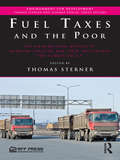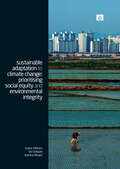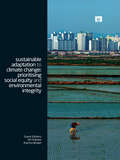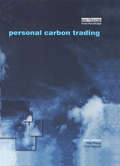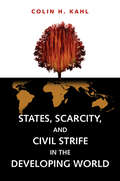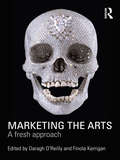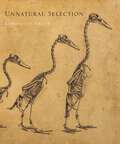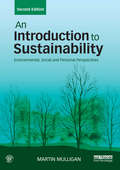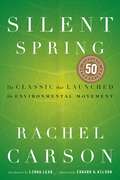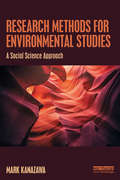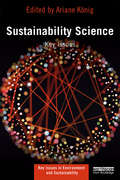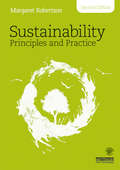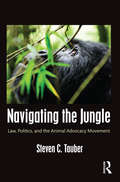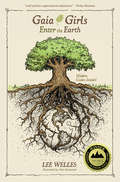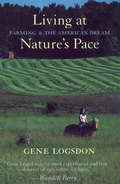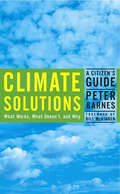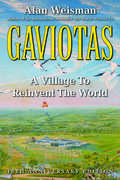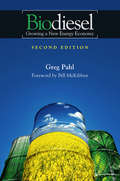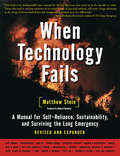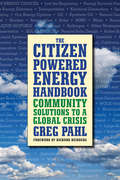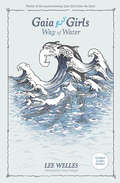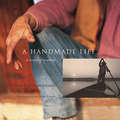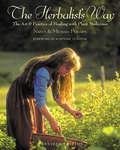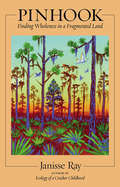- Table View
- List View
Fuel Taxes and the Poor: The Distributional Effects of Gasoline Taxation and Their Implications for Climate Policy
by Thomas SternerFuel Taxes and the Poor challenges the conventional wisdom that gasoline taxation, an important and much-debated instrument of climate policy, has a disproportionately detrimental effect on poor people. Increased fuel taxes carry the potential to mitigate carbon emissions, reduce congestion, and improve local urban environment. As such, higher gasoline taxes could prove to be a fundamental part of any climate action plan. However, they have been resisted by powerful lobbies that have persuaded people that increased fuel taxation would be regressive. Reporting on examples of over two dozen countries, this book sets out to empirically investigate this claim. The authors conclude that while there may be some slight regressivity in some high-income countries, as a general rule, fuel taxation is a progressive policy particularly in low income countries. Rich countries can correct for regressivity by cutting back on other taxes that adversely affect poor people, or by spending more money on services for the poor. Meanwhile, in low-income countries, poor people spend a very small share of their money on fuel for transport. Some costs from fuel taxes may be passed on to poor people through more expensive public transportation and food transport. Nevertheless, in general the authors find that gasoline taxes become more progressive as the income of the country in question decreases. This book provides strong arguments for the proponents of environmental taxation. It has immediate policy implications at the intersection of multiple subject areas, including transportation, environmental regulation, development studies, and climate change. Published with Environment for Development initiative.
Sustainable Adaptation to Climate Change: Prioritising Social Equity and Environmental Integrity
by Katrina Brown Eriksen SiriThis book sets out how to ensure that adaptation efforts are socially and environmentally sustainable, contributing to poverty reduction as well as confronting the processes driving vulnerability. Over $100bn a year is pledged to help finance adaptation projects via the The Climate Adaptation Fund. These projects and their funding played a central role in the latest climate talks in Cancun, Mexico, ensuring that adaptation to climate change will be an international priority over the next few decades. Many existing adaptation projects are however, not environmentally or socially sustainable. Adaptation projects that focus on reducing specific climate sensitivities can, even if bringing benefits, adversely affect vulnerable groups and create social inequity, or even unintentionally undermine environmental integrity. Sustainable Adaptation to Climate Change examines how adaptation to climate change (types of measures, policy frameworks, and local household strategies) interacts with social and environmental sustainability. A mixture of conceptual and case study-based papers draw on research from Europe, Asia and Africa. It will be of interest to all researchers and policymakers in climate change adaptation and development.
Sustainable Adaptation to Climate Change: Prioritising Social Equity and Environmental Integrity
by Katrina Brown Eriksen SiriThis book sets out how to ensure that adaptation efforts are socially and environmentally sustainable, contributing to poverty reduction as well as confronting the processes driving vulnerability. Over $100bn a year is pledged to help finance adaptation projects via the The Climate Adaptation Fund. These projects and their funding played a central role in the latest climate talks in Cancun, Mexico, ensuring that adaptation to climate change will be an international priority over the next few decades. Many existing adaptation projects are however, not environmentally or socially sustainable. Adaptation projects that focus on reducing specific climate sensitivities can, even if bringing benefits, adversely affect vulnerable groups and create social inequity, or even unintentionally undermine environmental integrity. Sustainable Adaptation to Climate Change examines how adaptation to climate change (types of measures, policy frameworks, and local household strategies) interacts with social and environmental sustainability. A mixture of conceptual and case study-based papers draw on research from Europe, Asia and Africa. It will be of interest to all researchers and policymakers in climate change adaptation and development.
Personal Carbon Trading
by Tina Fawcett Yael ParagPersonal carbon trading is rapidly moving up the political agenda as recognition grows of its potential to address urgent issues of climate change and natural resource use. Under personal carbon trading schemes a carbon allowance would be allocated to each individual, to be used and traded in the same way as in national and international carbon trading schemes. This volume presents the latest research on personal carbon trading at different scales - from the effects on the individual, communities and organisations, to its place in national, EU (including the EU ETS) and global policy landscapes. It presents key research on the economic and policy barriers and implications, and will be essential reading for anyone involved in emissions trading research or policymaking.
States, Scarcity, and Civil Strife in the Developing World (PDF)
by Colin H. KahlOver the past several decades, civil and ethnic wars have undermined prospects for economic and political development, destabilized entire regions of the globe, and left millions dead. States, Scarcity, and Civil Strife in the Developing World argues that demographic and environmental stress--the interactions among rapid population growth, environmental degradation, inequality, and emerging scarcities of vital natural resources--represents one important source of turmoil in today's world. Kahl contends that this type of stress places enormous strains on both societies and governments in poor countries, increasing their vulnerability to armed conflict. He identifies two pathways whereby this process unfolds: state failure and state exploitation. State failure conflicts occur when population growth, environmental degradation, and resource inequality weaken the capacity, legitimacy, and cohesion of governments, thereby expanding the opportunities and incentives for rebellion and intergroup violence. State exploitation conflicts, in contrast, occur when political leaders themselves capitalize on the opportunities arising from population pressures, natural resource scarcities, and related social grievances to instigate violence that serves their parochial interests. Drawing on a wide array of social science theory, this book argues that demographically and environmentally induced conflicts are most likely to occur in countries that are deeply split along ethnic, religious, regional, or class lines, and which have highly exclusive and discriminatory political systems. The empirical portion of the book evaluates the theoretical argument through in-depth case studies of civil strife in the Philippines, Kenya, and numerous other countries. The book concludes with an analysis of the challenges demographic and environmental change will pose to international security in the decades ahead.
Marketing the Arts: A Fresh Approach
by Daragh O'Reilly Finola KerriganIn recent years, there have been significant shifts in arts marketing, both as a practice and an academic discipline. The relationship between art and the market is increasingly complex and dynamic, requiring a transformation in the way the arts are marketed. Marketing the Arts argues that arts marketing is not about the simple application of mainstream managerial marketing to the arts. With contributions from international scholars of marketing and consumer studies, this book engages directly with a range of contemporary themes, including: The importance of arts consumption and its social dimensions The importance of the aesthetic experience itself, and how to research it Arts policy development The art versus commerce debate The role of the arts marketer as market-maker The artist as brand or entrepreneur This exciting new book covers topics as diverse as Damien Hirst’s 'For the Love of God', Liverpool’s brand makeover, Manga scanlation, Gob Squad, Surrealism, Bluegrass music, Miles Davis and Andy Warhol, and is sure to enthuse students and enlighten practitioners.
Marketing the Arts: A Fresh Approach
by Daragh O'Reilly Finola KerriganIn recent years, there have been significant shifts in arts marketing, both as a practice and an academic discipline. The relationship between art and the market is increasingly complex and dynamic, requiring a transformation in the way the arts are marketed. Marketing the Arts argues that arts marketing is not about the simple application of mainstream managerial marketing to the arts. With contributions from international scholars of marketing and consumer studies, this book engages directly with a range of contemporary themes, including: The importance of arts consumption and its social dimensions The importance of the aesthetic experience itself, and how to research it Arts policy development The art versus commerce debate The role of the arts marketer as market-maker The artist as brand or entrepreneur This exciting new book covers topics as diverse as Damien Hirst’s 'For the Love of God', Liverpool’s brand makeover, Manga scanlation, Gob Squad, Surrealism, Bluegrass music, Miles Davis and Andy Warhol, and is sure to enthuse students and enlighten practitioners.
Unnatural Selection
by Katrina Van GrouwA lavishly illustrated look at how evolution plays out in selective breedingUnnatural Selection is a stunningly illustrated book about selective breeding--the ongoing transformation of animals at the hand of man. More important, it's a book about selective breeding on a far, far grander scale—a scale that encompasses all life on Earth. We'd call it evolution.A unique fusion of art, science, and history, this book celebrates the 150th anniversary of Charles Darwin's monumental work The Variation of Animals and Plants under Domestication, and is intended as a tribute to what Darwin might have achieved had he possessed that elusive missing piece to the evolutionary puzzle—the knowledge of how individual traits are passed from one generation to the next. With the benefit of a century and a half of hindsight, Katrina van Grouw explains evolution by building on the analogy that Darwin himself used—comparing the selective breeding process with natural selection in the wild, and, like Darwin, featuring a multitude of fascinating examples.This is more than just a book about pets and livestock, however. The revelation of Unnatural Selection is that identical traits can occur in all animals, wild and domesticated, and both are governed by the same evolutionary principles. As van Grouw shows, animals are plastic things, constantly changing. In wild animals the changes are usually too slow to see—species appear to stay the same. When it comes to domesticated animals, however, change happens fast, making them the perfect model of evolution in action. Suitable for the lay reader and student, as well as the more seasoned biologist, and featuring more than four hundred breathtaking illustrations of living animals, skeletons, and historical specimens, Unnatural Selection will be enjoyed by anyone with an interest in natural history and the history of evolutionary thinking.
An Introduction to Sustainability: Environmental, Social and Personal Perspectives
by Martin MulliganAn Introduction to Sustainability provides students with a comprehensive overview of the key concepts and ideas which are encompassed within the growing field of sustainability. The fully updated second edition, including new figures and images, teases out the diverse but intersecting domains of sustainability and emphasises strategies for action. Aimed at those studying the subject for the first time, it is unique in giving students from different disciplinary backgrounds a coherent framework and set of core principles for applying broad sustainability principles within their own personal and professional lives. These include: working to improve equality within and across generations; moving from consumerism to quality of life goals; and respecting diversity in both nature and culture. Areas of emerging importance such as the economics of prosperity and wellbeing stand alongside core topics including: · Energy and society · Consumption and consumerism · Risk and resilience · Waste, water and land. Key challenges and applications are explored through international case studies, and each chapter includes a thematic essay drawing on diverse literature to provide an integrated introduction to fundamental issues. Housed on the Routledge Sustainability Hub, the book’s companion website contains a range of features to engage students with the interdisciplinary nature of sustainability. Together these resources provide a wealth of material for learning, teaching and researching the topic of sustainability. This textbook is an essential companion to any sustainability course.
Silent Spring (PDF)
by Rachel Carson Linda Lear Edward O. WilsonPortions of this book were first published as a series of articles in The New Yorker"--T.p. verso.
Research Methods for Environmental Studies: A Social Science Approach
by Mark KanazawaThe methodological needs of environmental studies are unique in the breadth of research questions that can be posed, calling for a textbook that covers a broad swath of approaches to conducting research with potentially many different kinds of evidence. Written specifically for social science-based research into the environment, this book covers the best-practice research methods most commonly used to study the environment and its connections to societal and economic activities and objectives. Over five key parts, Kanazawa introduces quantitative and qualitative approaches, mixed methods, and the special requirements of interdisciplinary research, emphasizing that methodological practice should be tailored to the specific needs of the project. Within these parts, detailed coverage is provided on key topics including the identification of a research project; spatial analysis; ethnography approaches; interview technique; and ethical issues in environmental research. Drawing on a variety of extended examples to encourage problem-based learning and fully addressing the challenges associated with interdisciplinary investigation, this book will be an essential resource for students embarking on courses exploring research methods in environmental studies.
Sustainability Science: Key Issues (Key Issues in Environment and Sustainability)
by Ariane König Jerome RavetzSustainability Science: Key Issues is a comprehensive textbook for undergraduates, postgraduates, and participants in executive trainings from any disciplinary background studying the theory and practice of sustainability science. Each chapter takes a critical and reflective stance on a key issue or method of sustainability science. Contributing authors offer perspectives from diverse disciplines, including physics, philosophy of science, agronomy, geography, and the learning sciences. This book equips readers with a better understanding of how one might actively design, engage in, and guide collaborative processes for transforming human-environment-technology interactions, whilst embracing complexity, contingency, uncertainties, and contradictions emerging from diverse values and world views. Each reader of this book will thus have guidance on how to create and/or engage in similar initiatives or courses in their own context. Sustainability Science: Key Issues is the ideal book for students and researchers engaged in problem and project based learning in sustainability science.
Sustainability Principles and Practice
by Margaret RobertsonThis new and expanded edition builds upon the first edition’s accessible and comprehensive overview of the interdisciplinary field of sustainability. The focus is on furnishing solutions and equipping the student with both conceptual understanding and technical skills for the workplace. Each chapter explores one aspect of the field, first introducing concepts and presenting issues, then supplying tools for working toward solutions. Techniques for management and measurement as well as case studies from around the world are provided. The second edition includes a complete update of the text, with increased coverage of major topics including the Anthropocene; complexity; resilience; environmental ethics; governance; the IPCC’s latest findings on climate change; Sustainable Development Goals; and new thinking on native species and novel ecosystems. Chapters include further reading and discussion questions. The book is supported by a companion website with links, detailed reading lists, glossary, and additional case studies, together with projects, research problems, and group activities, all of which focus on real-world problem solving of sustainability issues. The textbook is designed to be used by undergraduate college and university students in sustainability degree programs and other programs in which sustainability is taught.
Navigating the Jungle: Law, Politics, and the Animal Advocacy Movement
by Steven C. TauberFor much of our history, legal scholars focused predominantly on the law’s implications for human beings, while ignoring how the law influences animal welfare. Since the 1970s, however, there has been a steep increase in animal advocates’ use of the courts. Animal law has blossomed into a vibrant academic discipline, with a rich literature that examines how the law affects animal welfare and the ability of humans to advocate on behalf of nonhuman animals. But most animal law literature tends to be doctrinally-based or normative. There has been little empirical study of the outcomes of animal law cases and there has been very little attention paid to the political influences of these outcomes. This book fills the gap in animal law literature. This is the first empirically-based analysis of animal law that emphasizes the political forces that shape animal law outcomes.
Gaia Girls Enter the Earth: Enter The Earth (Gaia Girls #1)
by Lee Welles Ann HameisterElizabeth Angier was happy to be at the end of the school year. She thought her summer on the family farm would be full of work and play with her best friend, Rachel, and her other best friend, her dog, Maizey. However, Elizabeth didn't anticipate the Harmony Farms Corporation moving to her town. Her world starts to crumble as her best friend moves away and her parents whisper of farmers selling their land and the effects this factory farm operation could have on them. When she thinks things can't get much worse, she meets the most unusual creature, Gaia, the living entity of the Earth. Strange things begin to happen to her, around her, and through her! Elizabeth discovers that with these new powers comes responsibility. A dire mistake makes Elizabeth wonder if meeting Gaia has been a blessing or a curse. Will Elizabeth have the strength to fight a large corporation? Or will her upstate New York home be spoiled by profit driven pork production that fouls the air, land, and water?
Living at Nature's Pace: Farming and the American Dream
by Wendell Berry Gene LogsdonFor decades, Logsdon and his family have run a viable family farm. Along the way, he has become a widely influential journalist and social critic, documenting in hundreds of essays for national and regional magazines the crisis in conventional agri-business and the boundless potential for new forms of farming that reconcile tradition with ecology. Logsdon reminds us that healthy and economical agriculture must work "at nature's pace," instead of trying to impose an industrial order on the natural world. Foreseeing a future with "more farmers, not fewer," he looks for workable models among the Amish, among his lifelong neighbors in Ohio, and among resourceful urban gardeners and a new generation of defiantly unorthodox organic growers creating an innovative farmers-market economy in every region of the country. Nature knows how to grow plants and raise animals; it is human beings who are in danger of losing this age-old expertise, substituting chemical additives and artificial technologies for the traditional virtues of fertility, artistry, and knowledge of natural processes. This new edition of Logsdon's important collection of essays and articles (first published by Pantheon in 1993) contains six new chapters taking stock of American farm life at this turn of the century.
Climate Solutions: A Citizen's Guide
by Peter Barnes Bill McKibbenMillions of Americans are demanding that all levels of government—local, state, and federal—take immediate and effective action to fight climate change. But there’s a big problem. Hundreds of policy ideas are floating about, and many of them aren’t very good. It’s quite possible that bad climate policy will result, and that many years will then be lost before real emission reductions occur. We can’t afford to let that happen. That’s why this citizen’s guide is so important. It explains in clear and simple language what different climate policies will do—and what they won’t do. It tells you who’s behind the policies, who’d pay for them, and who’d profit. It strips away the spin and tells you the key facts you need to know. In a very real sense, this guide ushers in the next stage of the global-warming debate. In the first stage, we discussed the problem. In the next stage, we must choose solutions. Should we adopt a carbon tax? A carbon cap? A trading system that allows companies to “offset” their emissions by paying others to plant trees? This guide examines these proposals and many others. It’s essential reading for anyone who wants to stop climate change before it’s too late.
Gaviotas: A Village to Reinvent the World, 2nd Edition
by Alan WeismanLos Llanos—the rain-leached, eastern savannas of war-ravaged Colombia—are among the most brutal environments on Earth and an unlikely setting for one of the most hopeful environmental stories ever told. Here, in the late 1960s, a young Colombian development worker named Paolo Lugari wondered if the nearly uninhabited, infertile llanos could be made livable for his country’s growing population. He had no idea that nearly four decades later, his experiment would be one of the world’s most celebrated examples of sustainable living: a permanent village called Gaviotas. In the absence of infrastructure, the first Gaviotans invented wind turbines to convert mild breezes into energy, hand pumps capable of tapping deep sources of water, and solar collectors efficient enough to heat and even sterilize drinking water under perennially cloudy llano skies. Over time, the Gaviotans’ experimentation has even restored an ecosystem: in the shelter of two million Caribbean pines planted as a source of renewable commercial resin, a primordial rain forest that once covered the llanos is unexpectedly reestablishing itself. Colombian author Gabriel García Márquez has called Paolo Lugari “Inventor of the World.” Lugari himself has said that Gaviotas is not a utopia: “Utopia literally means ‘no place.’ We call Gaviotas a topia, because it’s real.” Relive their story with this special 10th-anniversary edition of Gaviotas, complete with a new afterword by the author describing how Gaviotas has survived and progressed over the past decade.
Biodiesel: Growing a New Energy Economy, 2nd Edition
by Greg Pahl Bill McKibbenFor anyone who is trying to keep up with the extremely rapid developments in the biodiesel industry, the second edition of Biodiesel: Growing a New Energy Economy is an invaluable aid. The breathtaking speed with which biodiesel has gained acceptance in the marketplace in the past few years has been exceeded only by the proliferation of biodiesel production facilities around the United States--and the world--only to confront new social and environmental challenges and criticisms. The international survey of the biodiesel industry has been expanded from 40 to more than 80 countries, reflecting the spectacular growth of the industry around the world. This section also tracks the dramatic shifts in the fortunes of the industry that have taken place in some of these nations. The detailed chapters that cover the industry in the United States have also been substantially rewritten to keep abreast of its many new developments and explosive domestic growth. An expanded section on small-scale, local biodiesel production has been added to better represent this small but growing part of the industry. Another new section has been added to more fully explore the increasingly controversial issues of deforestation and food versus fuel, as well as GMO crops. The second edition concludes with updated views on where the industry is headed in the years to come from some of its key players.
When Technology Fails: A Manual for Self-Reliance, Sustainability, and Surviving the Long Emergency, 2nd Edition
by Matthew SteinThere’s never been a better time to “be prepared.” Matthew Stein’s comprehensive primer on sustainable living skills—from food and water to shelter and energy to first-aid and crisis-management skills—prepares you to embark on the path toward sustainability. But unlike any other book, Stein not only shows you how to live “green” in seemingly stable times, but to live in the face of potential disasters, lasting days or years, coming in the form of social upheaval, economic meltdown, or environmental catastrophe. When Technology Fails covers the gamut. You’ll learn how to start a fire and keep warm if you’ve been left temporarily homeless, as well as the basics of installing a renewable energy system for your home or business. You’ll learn how to find and sterilize water in the face of utility failure, as well as practical information for dealing with water-quality issues even when the public tap water is still flowing. You’ll learn alternative techniques for healing equally suited to an era of profit-driven malpractice as to situations of social calamity. Each chapter (a survey of the risks to the status quo; supplies and preparation for short- and long-term emergencies; emergency measures for survival; water; food; shelter; clothing; first aid, low-tech medicine, and healing; energy, heat, and power; metalworking; utensils and storage; low-tech chemistry; and engineering, machines, and materials) offers the same approach, describing skills for self-reliance in good times and bad. Fully revised and expanded—the first edition was written pre-9/11 and pre-Katrina, when few Americans took the risk of social disruption seriously—When Technology Fails ends on a positive, proactive note with a new chapter on "Making the Shift to Sustainability," which offers practical suggestions for changing our world on personal, community and global levels.
The Citizen-Powered Energy Handbook: Community Solutions to a Global Crisis
by Greg Pahl Richard HeinbergIn the wake of Hurricane Katrina, Al Gore's summer blockbuster An Inconvenient Truth, and crude oil prices soaring to all-time highs, more people than ever know the truth about our oil addiction. Global warming is here. M. King Hubbert's oil peak is fast approaching (or may already have arrived). The secret's out: fossil fuel reserves are dwindling and popular interest has created the need for accessible, realistic solutions. The Citizen-Powered Energy Handbook, a clear-eyed view of the critical situation we face, offers ways out. Greg Pahl examines energy technologies currently available and homes in on renewable energy strategies that can be adopted by individuals and communities. Such cooperative initiatives have been common in Europe for years and are beginning to gain a foothold in the US. Each chapter focuses on a different renewable energy category--solar, wind, water, biomass, liquid biofuels, and geothermal--then reviews their advantages and disadvantages and desccribes numerous examples of successful, proven local initiatives. The Citizen-Powered Energy Handbook is an eloquent appeal for community and regional action to initiate an array of solutions to energy needs until now controlled by large, distant utilities and consortiums. It is time to take back control of the energy and environmental challenges ahead; this book will help people do just that. It is a handbook for anyone ready to take the first steps towards a more sustainable future.
Gaia Girls Way of Water: Way Of Water (Gaia Girls #2)
by Lee Welles Carol CooganMiho's backyard had always been the sea. The creatures within it were an endless source of fascination. But when the sea steals away her small family, she finds herself the ward of an uncle she has never met and submerged in a world she has never known: Japan. From the city of Nagoya to the seaside town of Goza, Miho struggles to fit in and navigate the language, the culture and her own grief. It is in Goza that she discovers her surprising family history and finds new teachers. She is befriended by an old man who becomes her Sensei and teaches her Sho-do, The Way of the Brush. And it is there she meets Gaia, the living entity of the Earth. Gaia grants her amazing powers to connect with the "minds in the water" and Miho is given access and understanding to all the world's oceans. Will she be able to use her powers to help balance the traditions of the past with the demands of the present? Can she overcome her outsider status to help others understand The Way of Water?
A Handmade Life: In Search of Simplicity
by William Coperthwaite Peter Forbes John SaltmarshWilliam Coperthwaite is a teacher, builder, designer, and writer who for many years hasexplored the possibilities of true simplicity on a homestead on the north coast of Maine. In the spirit of Henry David Thoreau, Emily Dickinson, and Helen and Scott Nearing, Coperthwaite has fashioned a livelihood of integrity and completeness-buying almost nothing, providing for his own needs, and serving as a guide and companion to hundreds of apprentices drawn to his unique way of being. A Handmade Life carries Coperthwaite's ongoing experiments with hand tools, hand-grown and gathered food, and handmade shelter, clothing, and furnishings out into the world to challenge and inspire. His writing is both philosophical and practical, exploring themes of beauty, work, education, and design while giving instruction on the hand-crafting of the necessities of life. Richly illustrated with luminous color photographs by Peter Forbes, the book is a moving and inspirational testament to a new practice of old ways of life.
The Herbalist's Way: The Art and Practice of Healing with Plant Medicines
by Nancy Phillips Michael Phillips Rosemary GladstarThis updated edition of The Village Herbalist provides a complete guide to the art and practice of herbalism, as well as an introduction to the herbalist's role in family and community life. Inspirational profiles of practicing herbalists from across the country add a human touch to the authors' wealth of practical herbal knowledge. The Herbalist's Way includes time-honored healing wisdom from many cultures, as well as information on: • Roles and responsibilities of herbalists in their communities • Herbal workshops, conferences, and education centers • Growing, drying, and preparing medicinal herbs • Learning to listen to clients and recommend holistic treatments for healing and continued wellness • Licensing, marketing, and other legal and business issues facing modern herbalists • Comprehensive resources and suggestions for building your herbal library
Pinhook: Finding Wholeness in a Fragmented Land
by Janisse RayJanisse Ray, award-winning author of Ecology of a Cracker Childhood and Wild Card Quilt, writes an evocative paean to wildness and wilderness restoration with an extraordinary journey into southern Georgia's Pinhook Swamp. Pinhook Swamp acts as a vital watershed and wildlife corridor, a link between the great southern wildernesses of Okefenokee Swamp and Osceola National Forest. Together Okefenokee, Osceola, and Pinhook form one of the largest expanse of protected wild land east of the Mississippi River. This is one of America's last truly wild places, and Pinhook takes us into its heart. Ray comes to know Pinhook intimately as she joins the fight to protect it, spending the night in the swamp, tasting honey made from its flowers, tracking wildlife, and talking to others about their relationship with the swamp. Ray sees Pinhook through the eyes of the people who live there--naturalists, beekeepers, homesteaders, hunters, and locals at the country store. In lyrical, down-home prose, she draws together the swamp's need for restoration and the human desire for wholeness and wildness in our own lives and landscapes.
